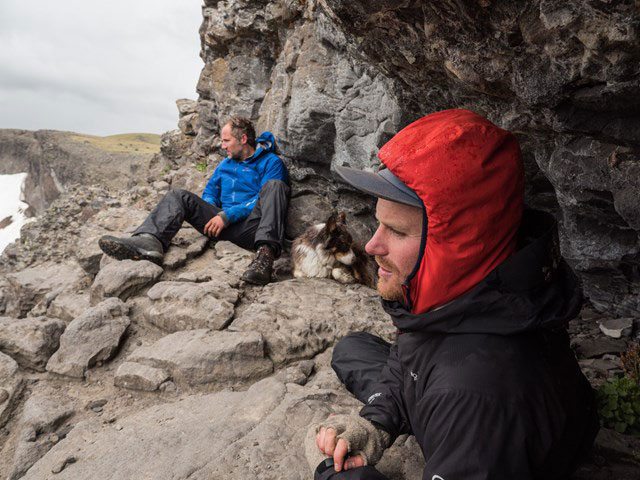The Buffalo Bill Center of the West is proud to announce that the 2013 winners of its Camp Monaco Prize for research have been tapped as National Geographic “Adventurers of the Year.” The team of University of Wyoming alumni Joe Riis and Arthur Middleton studied, photographed, and explored wildlife migrations in the Greater Yellowstone ecosystem (GYE).
The partners with the Camp Monaco award—the Center’s Draper Natural History Museum, University of Wyoming Biodiversity Institute, and the Prince Albert II of Monaco Foundation-USA—presented the $100,000 prize to Riis and Middleton for their elk migration project. The Center introduces the pair’s work in an upcoming 2016 exhibition at the Center, Invisible Boundaries: Exploring Yellowstone’s Great Animal Migrations.
According to National Geographic, the organization recognizes Riis and Middleton “for this [elk migration project], and earlier work each of them has done independently in the GYE, the National Geographic Adventurer of the Year award celebrates their achievements advancing the science, public understanding, and conservation of iconic migratory wildlife species in and around the country’s first national park.”
“Elk are the heartbeat of the greater Yellowstone ecosystem in a lot of ways and yet, their migrations hadn’t been explored with our modern tools,” Middleton tells National Geographic. “Just studying them didn’t seem like enough, so I wanted to join with Joe to experience them. It’s such an important ecological phenomenon, and we needed to see it with our own eyes.”
“This has grown out of longer-term work and a lot of partnerships that started at the University of Wyoming,” Riis adds. “The award recognizes this elk project, which is a partnership with the Wyoming Migration Initiative, and also work that started almost a decade ago with pronghorn migration…and mule deer migration…”

Riis, a wildlife photojournalist, and Middleton, a research scientist at Yale, have traveled 1,600 miles by foot, horse, and mule on trails of migratory elk in northwest Wyoming. They’ve spent months deep in the backcountry, come face to face with grizzlies, watched herds of elk swim the South Fork of the Shoshone River, crossed 12,000-foot mountain passes, and collared elk to map their movements, all to better understand how long-distance migration ties together the landscape—from ranches near Cody to Yellowstone’s renowned Thorofare country.
“One of the compelling aspects of this project,” according to Camp Monaco Prize Jury co-Chair Dr. C.R. Preston, “is that it attempts to bring scientists, government agencies, policy-makers, and the general public together around a topic that cuts across ecology, economy, and culture. It seems to me that approach holds the real hope for effective biodiversity conservation in the 21st century.”
In addition to the Center of the West exhibition, Riis and Middleton are working on a documentary film titled Elk River. Riis’s photos also will appear in the May 2016 issue of National Geographic magazine about the centennial of America’s National Park Service and in a book featuring his photography of Yellowstone migrations. Middleton, who recently accepted a wildlife ecology faculty position at the University of California-Berkeley, has more work planned in the GYE, and hopes the elk project will spur broader interest in scientific studies and conservation of migratory wildlife.
Riis and Middleton are among 10 honorees in the running for National Geographic’s People’s Choice Adventurer of the Year. The public can vote every day through January 31, 2016.
UPDATE: When the votes were counted, Nepali Mountaineer Pasang Lhamu Sherpa Akita won the award. Click here to read the article.
Since 1917, the award-winning Buffalo Bill Center of the West in Cody, Wyoming, has devoted itself to sharing the story of the authentic American West. The Center is an affiliate of the Smithsonian Institution. For additional information, visit centerofthewest.org or the Center’s Facebook page.






